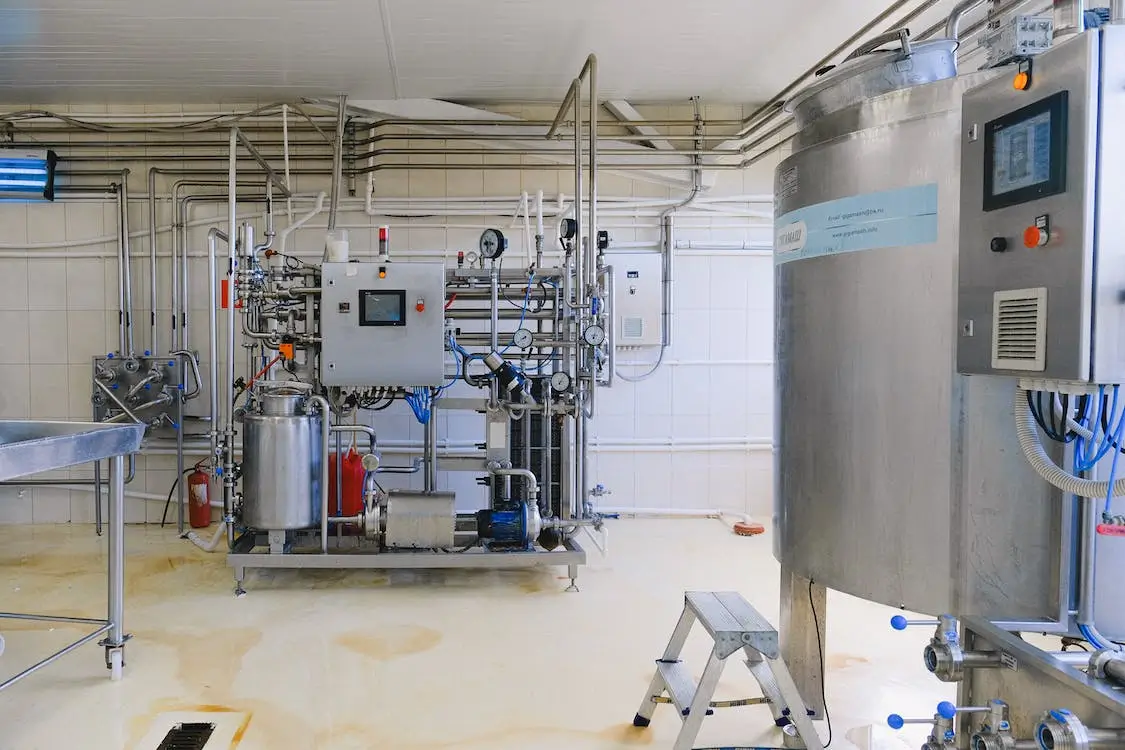Equipment failure accounts for 42% of unplanned downtime costs and can lead to over $50 billion in losses for the company. As machinery has become a critical component for industries to function, predictive maintenance practices have been widely adopted by industries to ensure machine protection from unplanned downtimes.
Among the predictive maintenance practices, professional vibration monitoring services have greatly taken industries by storm as they improve operational efficiency, reliability, and safety. With technology quickly integrating itself with different industries, vibration analysis companies aren’t much different. Today, they have also adopted online technology with vibration analysis to create online wireless vibration monitoring systems.
With the start of 2024, industries associated with vibration analysis must learn more about how online vibration monitoring systems operate and how online technology integration has improved these systems. The following blog explores the top seven trends regarding vibration monitoring and what these changes mean for the future of such industries.
Top Trends in Online Vibration Monitoring Systems
1. Industry 4.0 and the Internet of Things (IOT)
Among the most prominent trends in online technology is the integration of Industry 4.0 and the Internet of Things (IOT). Advanced sensors and connectivity features have enabled vibration analysis companies to monitor and gather real-time data from industrial machinery.
Along with vibration, these sensors can also sense various parameters, including temperature, pressure, sound, and more. IOT helps with data transmission, which is analyzed via artificial intelligence and machine learning algorithms that help detect anomaly patterns that can predict potential issues in the machine. Integrating Industry 4.0 with IOT has enhanced the predictive capabilities of vibration monitoring systems, thereby reducing unexpected breakdowns.
2. Wireless Remote Monitoring Systems:
The adoption of wireless technology has significantly boosted online vibration monitoring technology systems. Wired vibration monitoring technology is typically more expensive to maintain, not to mention that problems arise when it comes to attaching them at hard-to-reach places.
Wireless monitoring systems are far easier to set up, while without wires, maintenance costs are also deterred. In addition, wireless monitoring systems also provide the capability to monitor critical machinery remotely from a central location. This also improves the factory’s safety, especially in power generation sectors where the role of predictive maintenance seems to expand.
3. Advanced-Data Analytics and Machine Learning
Today, information holds the most power in industries. Businesses with the most information processing capacity seem to dominate the market, as it helps understand current trends and predict new ones. Data analysis plays a key role in generating useful information for businesses. However, data analysis can also be implemented with monitoring systems apart from predicting trends. Vibration analysis companies utilize data analytics to evaluate machine health.
However, now powered by machine learning technology, it has advanced critical machine health evaluation even further. Machine learning utilizes artificial intelligence to help. As with time, machine learning allows the software to learn patterns quickly, which helps it indicate patterns of anomalies. Wireless vibration monitoring systems can provide a more personalized approach to each machinery, leading to more accurate results indicating faults.
4. Edge Computing for Real-Time Analysis
Critical machinery often runs around the clock, so constant monitoring is crucial to ensure no unplanned failures occur. Vibration monitoring helps ensure that any potential issues are relayed before they occur. However, online wireless monitoring systems have made fault detection even quicker.
Edge computing is a growing trend in online wireless monitoring systems. It helps compute real-time analysis from the source instead of relaying it to a central server. This suggests that advanced sensors are used that not only record but also compute data at the same time. Edge computing reduces latency, minimizes bandwidth requirements, and offers quicker response time. The technology is quite beneficial in critical machinery that requires immediate action to prevent equipment failure.
5. Integration with Asset Management System
Not only do wireless vibration monitoring systems help with predictive maintenance practices, but they also play a key role in asset management. Integrating online vibration monitoring helps factory owners get a more thorough idea about their equipment performance, lifecycle, and history.
This helps them make more informed decisions, optimize planning, and contribute to the overall efficiency of the factory.
6. Portable and Handheld Vibration Monitoring Devices
Apart from making online monitoring systems wireless, there is also a growing trend to reduce the size of these systems to make them more user-friendly. These devices make spot vibration monitoring possible where continuous monitoring isn’t feasible.
Adopting these devices improves flexibility while assessing machinery health during routine inspections and planned shutdowns or troubleshooting activities.
7. Cloud-Based Vibration Monitoring Platforms
Cloud-based vibration monitoring is another growing trend in online vibration monitoring systems. Cloud technology provides scalability and remote access to vibration data. Cloud platforms can help store, analyze, and visualize vibration data in real-time with internet connectivity regardless of the location.
Factory managers can track and manage machine performance across multiple industrial assets through it.
Importance of Vibration Monitoring Systems
Predictive maintenance is crucial in power generation and product manufacturing industries. One of the best practices of predictive maintenance is through vibration analysis. Vibration analysis involves utilizing sensor technology to record, measure, and analyze internal vibration in the critical machinery component and assess its health. It helps improve industrial maintenance. Here are why vibration monitoring systems are considered a crucial component among industries.
1. Early Detection of Equipment Issues
Critical machinery operating around the clock is more prone to breakdowns. These breakdowns can account for unscheduled downtime’s, which could quickly cause the business to lose millions or even billions. One of the best practices to save machines from these unwanted scenarios is via fault detection before they occur.
Vibration monitoring enables early detection of any abnormal vibrations in machinery equipment. It measures subtle vibration patterns and potential issues, including misalignment, imbalances, and worn-out components. These early fault detection can extend the lifespan of your critical assets.
2. Enhanced Operational Safety
Caution is the utmost priority while handling or operating critical machinery. When issues arise, catastrophic accidents can put the employees working in the facility at risk.
Vibration monitoring is the first line of defense from these catastrophes. By hiring a vibration analysis company, facility owners can assess the condition of their critical assets and learn about any potential issues beforehand. This can help them plan out machinery maintenance and repair to ensure the working environment is safe for employees.
3. Optimized Equipment Performance
Power generation and product manufacturing facilities have costly machinery with delicate internal components. However, overuse of machinery can severely deteriorate their efficiency, which can cause unexpected breakdowns.
Vibration monitoring helps keep their machinery in check. The monitoring system helps evaluate the health and performance of machinery, allowing for timely correction. Before the issue even occurs. Through it, facility owners can boost factory efficiency and avoid unwanted failures.
4. Cost Savings through Predictive Maintenance
Factories often deal with critical machinery that is crucial and costly. Machine failure can result in costly repairs and downtimes, resulting in significant business losses. It is crucial to have a proactive approach planned to reduce unplanned downtime.
This is where vibration monitoring comes into play. Through these monitoring systems, they can predict any anomaly in these machines. This would help minimize downtime and repair these machines at a lower cost than fixing them when they break.
5. Compliance with Industry Standards
Industries have to follow specific regulations and standards to be operable. This is based on the fact that they need to ensure equipment safety and maintenance. Vibration monitoring helps businesses achieve it by meeting these regulations and requirements and providing continuous information regarding equipment health. Through it, you ensure the safety of not only operations but also the employees, as well as keep the organization safe from legal penalties.
Final Note
In conclusion, online wireless monitoring systems have truly changed the field of predictive maintenance. Vibration monitoring services are a must for proper operations of industrial facilities. These new trends innovating the vibration monitoring field will enhance machine health management.
FAQs
1. What is the Significance of Online Wireless Vibration Monitoring Systems in Industrial Settings?
Online wireless or remote vibration monitoring systems play a crucial role in machine health management. Through it, they allow early detection of potential issues, reducing downtime and preventing the organization from suffering unexpected losses.
2. How Do Wireless Vibration Monitoring Systems Differ from Traditional Wired Systems?
Wireless monitoring systems utilize wireless sensor technology that helps them record and relay information to a central server for further analysis. This allows them to simplify installation and reduces maintenance costs.
3. What is the Role of Industry 4.0 And IOT In the Trends of Online Wireless Vibration Monitoring?
Industry 4.0 and IOT have become significant online wireless vibration monitoring systems trends. These technologies have streamlined data gathering and improved connectivity with industrial machinery.
4. How Do Advanced Data Analytics and Machine Learning Contribute to Vibration Monitoring Trends?
Advanced data analytics and machine learning are new trends in vibration analysis. The technology helps identify subtle patterns, indicating machine health. In addition, machine learning through adaption enhances the predictive accuracy of the vibration monitoring system.


